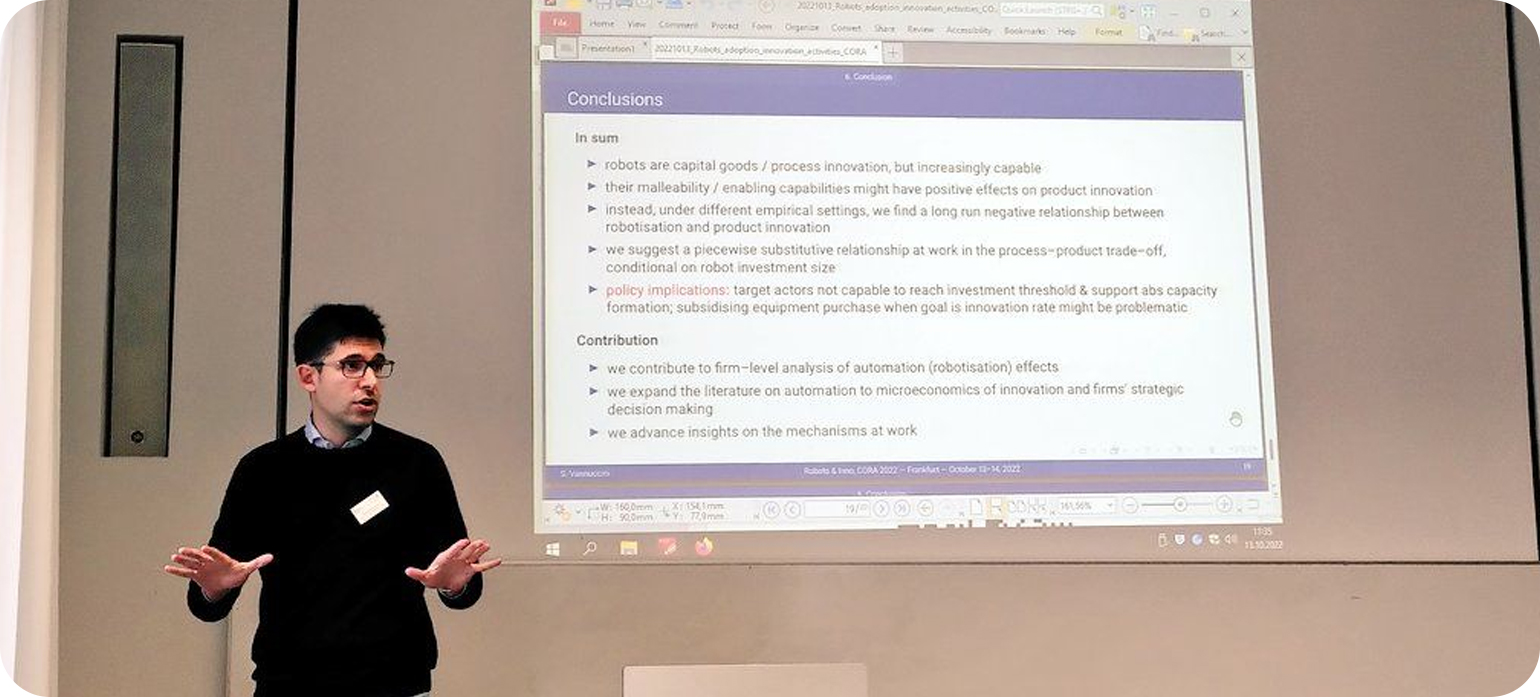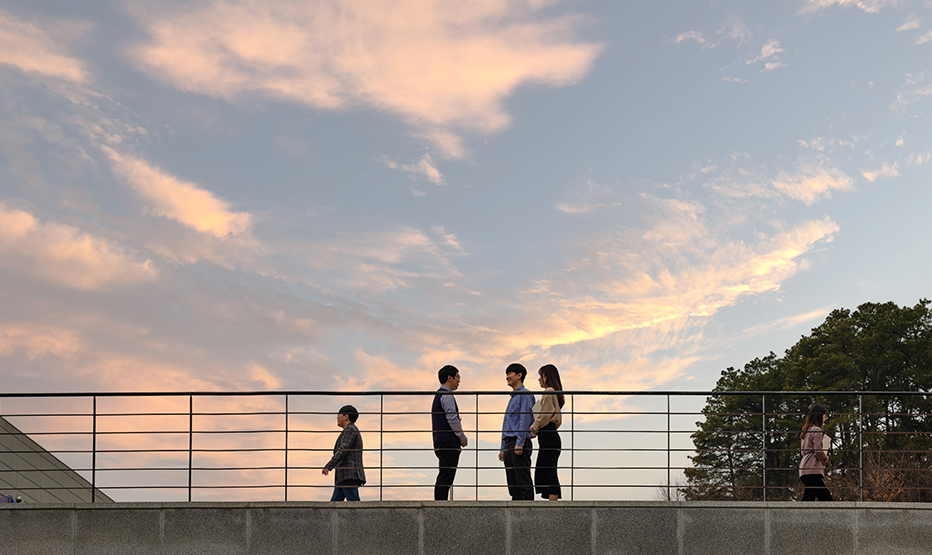VOL.03 · November 2022

VOL.03 · November 2022

When considering career development for young Science and Technology (S&T) researchers and future leaders, the focus is often placed on building ‘hands-on’ capabilities: how to manage time and stress, design a project tasks pipeline, work in groups, channel creative energies and manage conflicts, and — among many other things — how to obtain, process and interpret qualitative and quantitative information. However, there is a less-discussed, but also very important skills that future S&T leaders need to appreciate and master: that of charting conceptual maps of the contexts or phenomena of interest. Following Page (2018), we can label this skill ‘model thinking’. In brief, model thinking means taking a bird’s eye view, identifying fundamental issues and dynamics at work through abstraction. What makes any system change? What keeps it together? These are fundamental questions that models can help address.
In an ever complex world, model thinking is an essential skill. In fact, given the fundamental uncertainty that characterises current scientific, technological, economic and societal developments, it becomes increasingly hard to take sound actions. This does not mean that the guidelines driving our decision-making need to be linear, or overly simple; rather, the point is that we need clear, consistent ‘organising concepts’ and schemes to structure thought and action. For example, contemporary societies are at the same time shaped and need to deal with a series of interconnected megatrends and grand challenges. These are an extreme test to our capability to understand the changing landscape surrounding us and, thus, to derive criteria for decision making. The megatrends just mentioned are (in a non-ranked order):
(i) the emergence of novel, potentially radical, breakthrough individual technologies as well as technology systems (both software, i.e. artificial intelligence, and hardware, i.e. sophisticated robots and equipment, sensors, or new materials) whose adoption changes the ‘rulebook’ of innovation, production, and consumption. In turn, this induces changes in industry structures (e.g. favouring the concentration of market power and, consequently, the policy need to ensure fair competition) as well as employment;
(ii) the changes and adjustments induced by the Covid-19 pandemics, in particular the acceleration in digitalisation across different domains and the exploration of new modalities of work (e.g. work from home), leading to renewed attention to the theme of the so-called Future of Work;
(iii) the increasing pressures to restructure globalisation and global value chains into a less-open and more geopolitical-wary world where achieving autonomy from key dependencies (e.g. raw materials) and the development of capabilities to produce strategic assets (e.g. semiconductor devices) become a key priority;
(iv) human-created climate change and the need to guarantee a rapid green transition and a true move — instead of simple and damaging ‘greenwashing’ — towards sustainability;
(v) the rising socio-political turmoil and fragmentation, internationally and within countries, driven by rising inequalities, reactionary movements, and threats to the value of democracy.

All these megatrends and challenges outline a landscape under a permanent threat of ‘unwanted collapse’, with crises potentially flaring unexpectedly in different areas or domains of activity in our planet, and then diffusing following a domino effect. While the resulting picture seems rather bleak, it is also true that substantial opportunities like ahead for those who can identify fundamental trends and understand at the core which are the drivers of transformation.
In a recent work (Lombardi and Vannuccini 2022), we suggest that by weaving together the different threads discussed above through a novel organising concept we can make better sense of the current challenges and opportunities. We labelled the current multifaceted, complex landscape we live in the ‘cyber-physical universe’, and described its nature and properties. Our ‘universe’ is cyber-physical due to the centrality of computation at all levels, so much that information has become the ‘fabric of reality’ and the boundaries between what is physical and what is digital have become increasingly fuzzy and blurred. The cyber-physical universe has been enabled by the growth in computational power and its ubiquitous presence, which set-up the stage for a restless feedback loop between information generation and processing. Looking at the world through the lenses of the cyber-physical universe can help us to re-assess the way we take decision and the modalities through which technology can support us. For example, from this perspective, AI can be seen as a prediction and research tool augmenting humans that — if fairly and inclusively produced and governed — can be decisive in reducing the gap between the growing complexity of the world and that of our cognitive capacities.
Concepts such as the cyber-physical universe are sort of ‘thinking devices’, namely conceptual tools that help us creating some order in a reality that feels too complex to grasp in its entirety. In this sense, they are examples of model thinking. Models are simplified representation of the reality that helps us moving through it — precisely as maps do. And as a 1:1 map is useless, so are models that do not strip details out of descriptions. As every simplification, models need to give up details that do not matter to the working of the system under study so that fundamental mechanisms can be highlighted. The rationale for outlining a model stands precisely in the opportunity to identify key mechanisms, as these might be portable: different cases, contexts, and phenomena might be driven be similar forces. Abstracting, that is developing the capability to see when something is just a special case of a more general phenomenon, is a very powerful tool for researchers and leaders alike, as decisions and actions will be better grounded and, thus, more successful.

In order to get the best from modelling, Lave and March (1993) outlined four key skills to focus on:
· an ability to abstract from reality to model
· a facility at derivation within the abstract model
· a competence at evaluating the model
· a familiarity with some common models
Young S&T researchers might want to spend time to train these skills. Examples of models that are portable across contexts are situations of strategic interactions as described by game theory (i.e. the prisoner dilemma game), or dynamic descriptions of some intertwined ‘laws of motion’, e.g. the Lotka-Volterra model of predator-prey interaction, which applies to animal populations in ecological niches as well as to contractual negotiations between employers and employees, or the replicator dynamics model of Darwinian evolution, which explains both natural selection and market selection amongst firms (Cantner et al. 2019).
Models can be useful to guide empirical exploration: when two different models are at odds with each other, that usually suggests that a certain outcome might be the result of different ‘data generating processes’. Such clash of view can even spur creative thinking, leading to new solutions to problems and to development of new viewpoints and perspectives.
In sum, next to traditional skills, young S&T researchers and leaders should not forget the one introduced here: the capability to craft models of the reality. This will help them to design strategies, catch opportunities, level-up their careers, and most importantly, to contribute to building a better world by addressing the grand challenges and megatrends that characterise our era.
Cantner, U., Savin, I., & Vannuccini, S. (2019). Replicator dynamics in value chains: Explaining some puzzles of market selection. Industrial and Corporate Change, 28(3), 589-611.
Lave, C. A., & March, J. G. (1993). An introduction to models in the social sciences. University Press of America.
Lombardi, M., & Vannuccini, S. (2022). Understanding emerging patterns and dynamics through the lenses of the cyber-physical universe. Patterns, 3(11), 100601. https://doi.org/10.1016/j.patter.2022.100601
Knell, M., & Vannuccini, S. (2022). Tools and Concepts for Understanding Disruptive Technological Change after Schumpeter. In The Routledge Handbook of Smart Technologies (pp. 77-101). Routledge. http://www2.wiwi.uni-jena.de/Papers/jerp2022/wp_2022_005.pdf
Page, S. E. (2018). The model thinker: What you need to know to make data work for you. Basic Books.
Smaldino, Paul. Better methods can’t make up for mediocre theory. Nature 575, no. 7781 (2019): 9